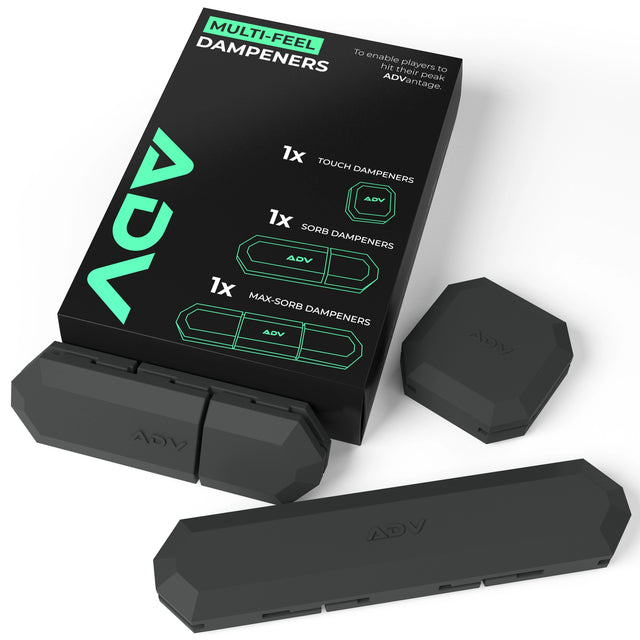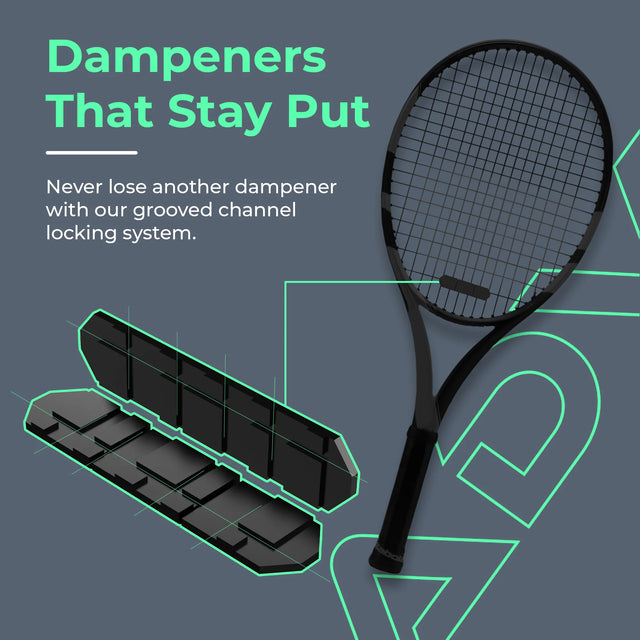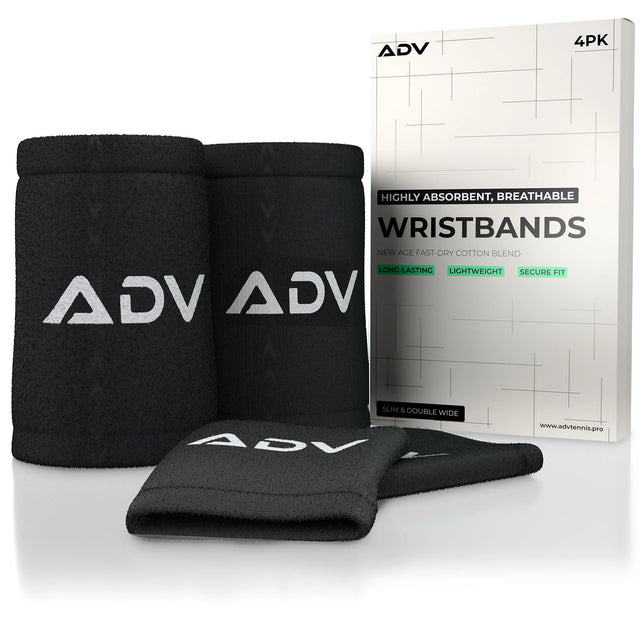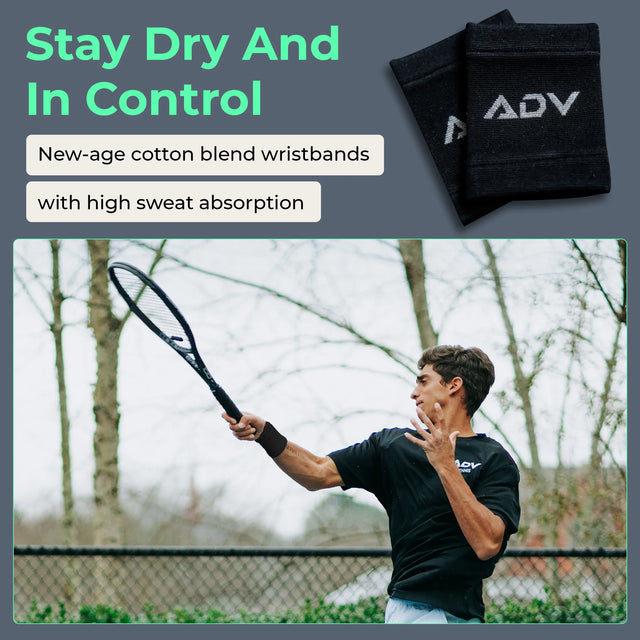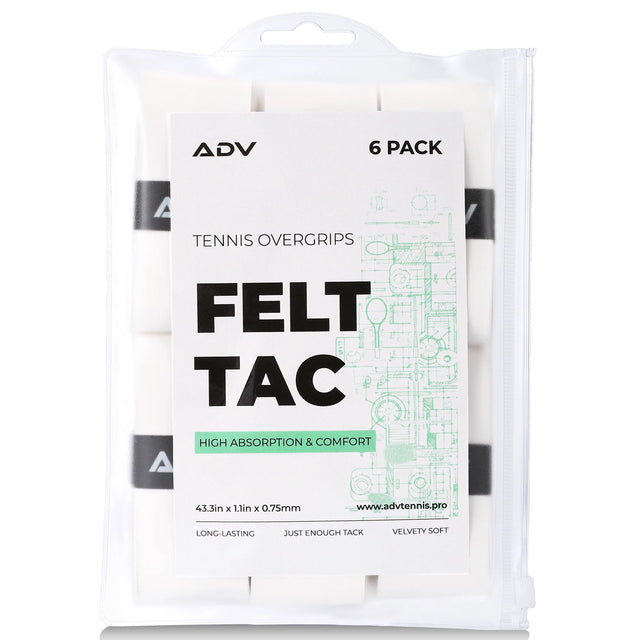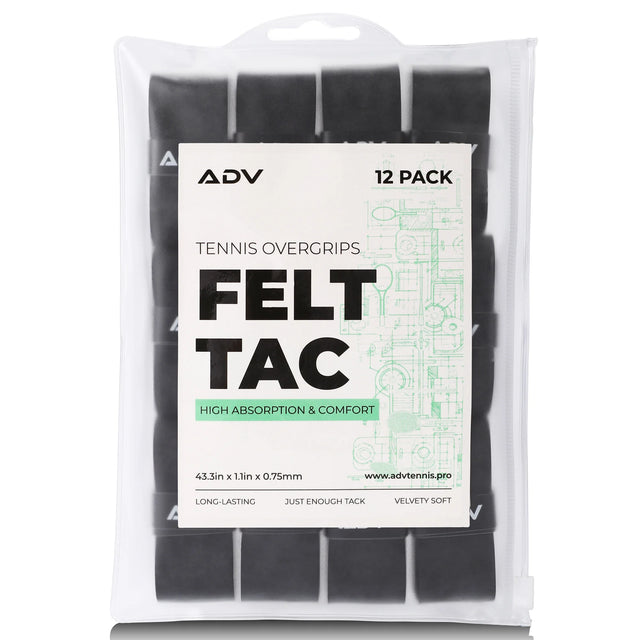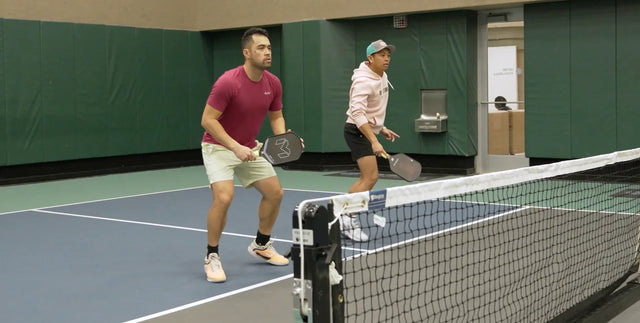Enhancing Your Grip: Tips for Applying Tennis Overgrips
In tennis, the quality of your grip on the racquet can significantly impact your game. A secure and comfortable grip enhances control and precision, allowing for more effective shots and less strain on the arm. Applying tennis overgrips is a popular way to ensure your grip remains optimal during intense matches and practices. An overgrip can absorb sweat, prevent slippage, and increase the overall comfort of the handle, making it an essential part of your tennis equipment.

Types of Tennis Overgrips
Tacky Overgrips
Among the variety of tennis overgrips available, tacky overgrips stand out for their ability to improve a player's grip on the racquet during play. These overgrips are designed to provide a sticky feel, which ensures that the racquet doesn't slip from your hands, especially in hot conditions where sweat can compromise grip. Tacky overgrips are often the best tennis overgrips for players who prioritize control and precision in their strokes. They also tend to be thinner, allowing for a more direct feel of the racquet's handle.
Absorbent Overgrips
Absorbent overgrips are crucial for players who often play in humid conditions or have sweaty hands. These overgrips are made from materials that wick moisture away from the surface, thus maintaining a dry grip throughout matches and practice sessions. The main advantage of using absorbent overgrips is their ability to keep your grip consistent and slip-free, even as the intensity of the game increases. This type of grip is an essential piece of tennis training equipment for anyone looking to maintain a reliable hold on their racquet under any conditions.
Cushioned Overgrips
With their additional layer of comfort and stress absorption, cushioned overgrips are perfect for players with delicate hands or prone to conditions like tennis elbow. These overgrips are slightly thicker, which can help reduce joint impact during vigorous play. By improving comfort, cushioned overgrips allow players to enjoy longer sessions on the court without discomfort. Tennis grip tips often recommend these for beginners who are still getting used to the physical demands of tennis, as well as for veteran players seeking extra support.
Factors to Consider When Selecting an Overgrip
Personal Comfort and Feel
The feel of an overgrip is a subjective factor, but critical to your performance and enjoyment of the game. Some players prefer a thicker grip for a more substantial feel, while others opt for thinner grips for a closer connection to the racquet. Comfort is paramount, as it directly influences your ability to play long matches without discomfort or fatigue. Experimenting with different tennis racquet grips can help you determine which thickness and texture provide the optimal balance between comfort and control.
Durability and Longevity
Frequent players might find value in choosing overgrips known for their longevity, even if they come at a higher cost. Assessing the material and quality of the overgrip can provide insights into its expected lifespan. Some materials may offer greater resistance to wear and tear, making them ideal for players who train frequently. Investing in the best overgrips for tennis that are durable can reduce the frequency of replacements and ensure consistent performance.
Guide to Applying Overgrips
Preparing the Racquet Handle
Before applying a new overgrip, it's crucial to prepare the racquet handle properly. Start by removing the old overgrip and any residual residue. This ensures a clean surface, which is vital for the new grip to adhere properly. Check the handle for any damage or wear that might affect the feel or function of the new grip. Wiping the handle down with a slightly damp cloth can remove dirt or oils, providing a pristine surface for the tennis grip tape application.
Aligning the Grip Tape
To begin applying the overgrip, align the tapered end of the grip tape with the butt of the racquet handle. This starting point is critical as it sets the foundation for the entire wrap. Make sure the initial wrap is tight and secure. For most grips, you'll want to start on the dominant-hand side of the handle and work your way up. Ensure that the grip tape overlaps slightly with each rotation around the handle, which helps maintain an even and consistent layer without any gaps.
Finishing and Securing the Overgrip
One must know how to properly finish and secure your tennis overgrip to ensure it stays in place during play and provides a comfortable, professional feel. Once you’ve wrapped the overgrip up to the top of the handle, check for any excess material extending beyond the end of the handle or throat. If there is excess overgrip, use a pair of sharp scissors to trim it neatly, following the handle's contour for a clean edge. This prevents bunching or overlapping that could compromise your grip or create discomfort. Next, take the adhesive finishing tape that typically comes with the overgrip. Starting at the end point of the wrap, firmly press the tape over the loose edge of the overgrip, making sure to cover both the end of the grip and a small portion of the racket handle. Wrap the tape around the handle once or twice, maintaining slight tension to keep it secure without stretching the tape excessively. This step is essential, as the finishing tape holds the overgrip in place and prevents it from unraveling during intense rallies. For added security, some players use a second layer of tape or opt for high-quality electrical tape, especially if the original finishing tape is thin. Ensure the tape is smooth and free of wrinkles, as any unevenness can affect your grip comfort. Finally, check that the transition between the overgrip and the taped section is seamless. A well-finished overgrip not only looks professional but also provides consistent performance, allowing you to focus fully on your game without distraction.
Tips for Maintaining Tennis Overgrips
When to Replace Overgrips
Knowing when to replace your overgrip is key to maintaining optimal performance. Signs that it's time for a tennis grip replacement include noticeable wear, reduced tackiness, or increased slippage during play. Additionally, if the grip starts to feel uncomfortable or you notice a decrease in shock absorption, these are clear indicators that the overgrip has lost its effectiveness. Regular players should consider changing their overgrips every few weeks or as often as every few matches if playing in harsh conditions. Keeping your overgrip clean extends its life and maintains its performance. Avoid using harsh chemicals or abrasive materials that could damage the grip material. For more persistent grime, a mild soap solution can be used sparingly. Let the grip dry completely before storing your racquet, as moisture can degrade the material and reduce the grip's lifespan.

Storing Racquets Properly
Taking proper care of your tennis racquet is essential to maintain its performance and longevity. A well-maintained racquet can make a significant difference in your game, ensuring that all aspects of the racquet, from the frame to the overgrip, are in optimal condition. Below are guidelines for storing your tennis equipment effectively:
- Avoid Extreme Temperatures: Always store your racquet in a place that maintains a stable, moderate temperature. Extreme temperatures, whether cold or hot, can have detrimental effects on your tennis racquet. Cold conditions can make the materials brittle and more prone to cracking, while heat can warp the racquet frame and cause the overgrip material to degrade or become tacky. To prevent these issues, it’s best to store your racquet in an environment where temperature fluctuations are minimal.
- Use a Racquet Bag: It is crucial to store your racquet in a specialized tennis racquet bag. These bags are not only designed to fit racquets snugly but also provide additional padding to shield the equipment from physical impacts and environmental damage. Furthermore, many racquet bags come with compartments that allow for better organization and protection of other tennis gear, such as balls and clothing, ensuring that everything stays in place and is not jostled during transport.
- Keep it Dry: As mentioned previously, before storing your racquet, make sure that both the racquet and overgrip are completely dry. Moisture is one of the main enemies of tennis equipment, as it can not only make the grip slippery—impairing your play—but also promote the growth of mold and mildew. These can degrade the materials and cause unpleasant odors. If your racquet or grip gets wet, thoroughly dry it with a soft, absorbent towel before putting it away.
- Avoid Direct Sunlight: Prolonged exposure to direct sunlight can be harmful to your tennis racquet, especially the overgrip. UV rays can fade the color of the grip and weaken the material, making it less effective and reducing its lifespan. Store your racquet in a shaded, cool place where it won’t be subjected to direct sunlight to help preserve the integrity and appearance of the overgrip.
- Separate from Heavy Items: Ensure that your racquet is stored in a location where it won’t be compressed or crushed by heavier items. Heavy objects pressing against the racquet can deform the grip or frame, potentially leading to a negative impact on its performance. Ideally, the racquet should be stored in a position where it remains horizontal or securely hung, so there’s no risk of bending or other forms of distortion.
By following these strategies, you can ensure that your tennis racquet remains in pristine condition, ready for your next game. Proper care and storage not only prolong the life of your racquet but also contribute to a consistently high level of play.
Where to Buy and Product Recommendations
Options for purchasing overgrips, including top-rated products, online retailers, and customer reviews.
Online Retailers
Purchasing tennis equipment has never been easier thanks to various online retailers. These platforms not only provide detailed product descriptions and reviews but also often feature comparisons and seasonal discounts. For those looking to buy tennis grips online, these sites offer a convenient and efficient shopping experience, ensuring you find the right grip based on your specific playing style and needs.
Customer Reviews and Recommendations
Before making a purchase, it's wise to consult customer reviews and recommendations. Insights can be incredibly valuable, providing real-world feedback on the performance and longevity of overgrips. Review sections on product pages or dedicated tennis forums can offer diverse opinions and personal experiences, helping you measure the effectiveness of a grip in various conditions.
Comparing Prices and Deals
Check multiple sources to ensure you're getting the best value for your money. Look for bulk purchase options, which can be more economical in the long run. Additionally, keep an eye out for promotional offers, especially during off-season sales or special events, which can significantly lower the cost of high-quality overgrips. Comparing these deals not only helps you save money but also allows you to stock up on your preferred tennis handle wraps without breaking the bank.
Integrating Overgrips with Other Accessories
Tennis players continuously seek ways to improve their performance and comfort on the court. One simple yet effective method is to integrate overgrips with other tennis accessories. Here's an exploration of how you can seamlessly combine overgrips with other gear to enhance your game:
- With Vibration Dampeners: Adding a vibration dampener to your racquet while using a quality overgrip can significantly reduce the impact shock, enhancing both comfort and control during play. Vibration dampeners help to minimize the vibrations that travel through the racquet upon hitting the ball, which can reduce the risk of tennis elbow and other impact-related injuries. Pairing this with a tacky overgrip ensures a firm, non-slip hold, allowing for more precise swings and better overall racket handling.
- With Wristbands: Wristbands serve to absorb sweat before it reaches the hands, preserving the player's grip on the racquet. An overgrip complements this by providing a secure, moisture-resistant surface, ensuring that any moisture that does make it to your hands doesn’t compromise your grip.
- With Different Racquet Strings: Matching the right overgrip with the type of strings you use can greatly optimize both feel and performance on the court. For example, using a cushioned overgrip with polyester strings can mitigate the typically harsh feel these strings produce. Polyester strings are favored for their durability and ability to generate spin, but they can be tough on the hands. A cushioned overgrip absorbs some of the shock and provides a softer touch, enhancing the overall feel and reducing strain on the hands.
- With Personalized Handle Shapes: Custom handle shapes are tailored to a player’s specific hand structure, improving handling and reducing the risk of injury. An overgrip suited to the custom handle can enhance this fit further, providing additional comfort and ensuring the grip remains secure even during vigorous play.
- With Protective Gear: Integrating overgrips with gloves or other protective hand gear designed for tennis can provide additional comfort and blister protection, particularly during colder months or lengthy matches. Gloves and similar gear protect against the cold and prevent blisters, while an overgrip ensures that the racquet stays firmly in your hand despite the extra layers.
By thoughtfully combining overgrips with these various tennis accessories, players can tailor their equipment to their personal needs and playing style, leading to improved performance and enjoyment of the game.


